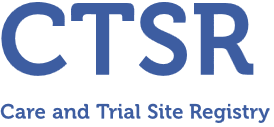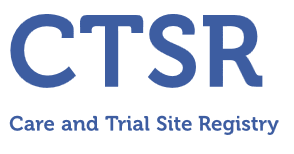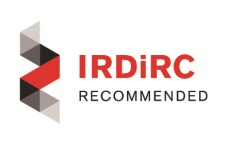CTSR Overview
The Care and Trial Site Registry (CTSR) is an online database of specialised sites that see patients with neuromuscular and neurodegenerative diseases. It holds site-level information relevant to clinical studies, including facilities, equipment, personnel, and trial experience, as well aggregate data about their patient population. It does not contain identifiable patient data. The CTSR supports organisations such as EURO-NMD, the European Network of Excellence for Rare Neuromuscular Disorders, to provide data on their partnering health care providers for reporting, bench-marking and communication.
This information can help identify sites meeting specific criteria for a range of purposes: enabling the pharmaceutical industry and clinical investigators select prospective sites for multi-centre clinical trials; permitting the identification of potential partners in research collaborations; and supporting the collection and analysis of site-specific data for coordination and analysis in research networks. The flexibility of the CTSR permits extension to cover new disease groups and specific use cases: please contact us to discuss potential collaborations.
During 2022, we will be enhancing and developing the underlying technical platform of the CTSR. This will include the development of a FAIR data endpoint, enabling interoperability with other rare disease infrastructures such as the Virtual Platform of the European Joint Programme on Rare Diseases.
Benefits of participation
Benefits for registered sites include:
- Increasing visibility of your site among patients, researchers, clinicians, and industry
- Potential participation in clinical trials and research projects
- Participation in an international network of centres
Benefits for industry and researchers:
- A single point of access for clinical trial or research project feasibility information
- Draw on an existing network of specialised neuromuscular and neurodegenerative sites for your research project
- Improve recruitment by combining site-level data with information from patient registries, in a joint enquiry with TREAT-NMD
Participate
Registration in the CTSR is free of charge: sign up here
Sites can register as a centre for neuromuscular diseases (NMDs), a centre for neurodegenerative diseases (NDD), or both. The CTSR intake questionnaire will lead you through relevant questions that are shared between the two fields of diseases and those that are specific for NMD centres or NDD centres respectively.
To view the CTSR questionnaire, click here
Background
The CTSR was initially established in 2007 by the Clinical Trials Coordination Centre in Freiburg, as part of the EU-funded TREAT-NMD Neuromuscular Network that aimed accelerate preclinical and clinical development in the neuromuscular field. It was further developed to cover neurodegenerative conditions as part of the EU-funded NeurOmics project from 2013.
A paper summarising the CTSR was published in the Orphanet Journal of Rare Diseases: The TREAT-NMD care and trial site registry: an online registry to facilitate clinical research for neuromuscular diseases. Rodger S et al., Orphanet Journal of Rare Diseases 2013, 8:171
The content published on this website including the questionnaire and data entry system has been developed by the University Medical Centre Freiburg within the TREAT-NMD Network and is subject to copyright laws. Any utilisation without prior explicit approval by the University Medical Centre Freiburg is in violation of the German Copyright Act. Copies and downloads to facilitate data entry are permitted. For any other use please contact ctsr@uniklinik-freiburg.de.










